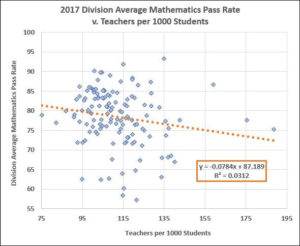
Parents and educators commonly believe that smaller class sizes provide a superior education. It seems logical: Smaller classes allow teachers to provide more individual attention to students. But the evidence supporting this intuitive view is surprisingly thin. A new study by the Campbell Collaboration, which promotes social and economic change through evidence-based policy, which calls the conventional wisdom into question.
The belief in the efficacy of small class sizes has inspired class-size reductions in the United States, Great Britain and Netherlands, observes the study, “Small class sizes for improving student achievement in elementary and secondary schools: a systematic review.” But the investment is expensive? Does it work?
The researchers conducted a meta-analysis of 127 studies that analyzed 55 student populations across 41 countries. The conclusion: “There is some evidence to suggest that there is an effect of reducing class size on reading achievement, though the effect is very small. There is no significant effect on mathematics achievement.”
While the overall effect is negligible, smaller class sizes have been shown to be more beneficial for students from socioeconomically disadvantaged backgrounds.
Smaller class sizes are costly, however, the study argues, and there may be more cost-effective strategies for improving student achievement.
I asked John Butcher, of Cranky’s Blog fame, to run an analysis for Virginia school systems. The chart above, which compares teacher-pupil ratios and math Standards of Learning pass rates of Virginia school districts, shows a negative (though statistically insignificant) correlation between teacher-pupil ratios and academic performance — totally consistent with the Campbell Collaboration study.
Bacon’s bottom line: Parents and educators in Virginia take it as an article of faith that class size is a key determinant of educational quality. But the effect may be far less significant than imagined. Instead of pushing for smaller classes, perhaps educators should consider different strategies.
For example: A judicious increase in class sizes — say, from 24 students per class to 26 students, should have no discernible effect on student achievement. But what if adjusting the teacher-student ratio freed resources that could be redirected to staffing classrooms dedicated to disadvantaged or disabled kids with a track record of disrupting their classes? Would such focused classes do a better job of helping the troubled students? Would the removal of classroom troublemakers allow teachers do a better job of teaching the other students?
I don’t know the answer. And even if I thought I did, I’d favor running pilot programs to test the idea before rolling it out on a large scale. But this is the kind of thinking, I submit, in which we need to engage rather than doubling down on stale and failed prescriptions.

Leave a Reply
You must be logged in to post a comment.